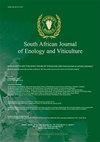A Review of Tannin Determination Methods Using Spectrophotometric Detection in Red Wines and Their Ability to Predict Astringency
IF 1.1
4区 农林科学
Q4 FOOD SCIENCE & TECHNOLOGY
引用次数: 8
Abstract
Astringency is an important sensory attribute that influences red wine quality. The astringent sensation inside the mouth is caused by a group of molecules called tannins. These molecules can be quantified and analysed by several numbers of methods, such as the Bate Smith method, Adams Harbertson assay, and methylcellulose precipitation method. All these methods are colourimetric, however they differ on the principle on which they are based and, as well as on the tannin pool they are able to measure. In the literature, it is possible to find a wide range of concentrations of tannins for the main red wines varieties, which have been evaluated by the methods herein reviewed. For instance, higher tannin concentrations are obtained using the Bate Smith method (2.08-3.48 g/L tannin) compared with the Adams Harbertson assay (0.58-0.14 g/L tannin), which exhibit the lowest results. However, studies that directly compare results obtained with these methods are scarce. The aim of this work is to compare tannin concentrations in red wines and along with how sensory astringency correlates with tannin concentration measured by these three methods.分光光度法测定红葡萄酒中单宁的方法及其预测涩味的能力综述
涩味是影响红酒品质的重要感官属性。口腔内的涩味是由一组叫做单宁酸的分子引起的。这些分子可以通过多种方法进行量化和分析,如Bate Smith法、Adams Harbertson法和甲基纤维素沉淀法。所有这些方法都是比色法,但是它们所依据的原理以及它们能够测量的单宁池不同。在文献中,有可能找到一个范围广泛的单宁浓度的主要红葡萄酒品种,这已经通过本文所述的方法进行了评估。例如,与Adams Harbertson法(0.58-0.14 g/L单宁)相比,Bate Smith法获得的单宁浓度更高(2.08-3.48 g/L单宁),后者的结果最低。然而,直接比较这些方法得到的结果的研究很少。这项工作的目的是比较红葡萄酒中的单宁浓度,以及感官涩味与这三种方法测量的单宁浓度之间的关系。
本文章由计算机程序翻译,如有差异,请以英文原文为准。
求助全文
约1分钟内获得全文
求助全文
来源期刊
CiteScore
2.50
自引率
7.70%
发文量
1
审稿时长
>36 weeks
期刊介绍:
The South African Journal of Enology and Viticulture (SAJEV) publishes full-length original Research Papers, Research Notes and Review Papers on all subjects related to enology and viticulture. The SAJEV does not accept articles published in, or submitted to, other journals.

 求助内容:
求助内容: 应助结果提醒方式:
应助结果提醒方式:


